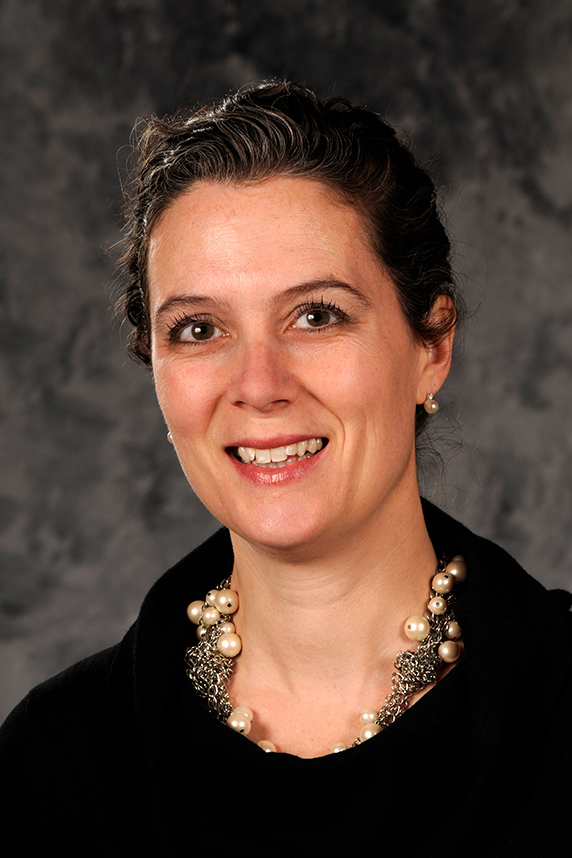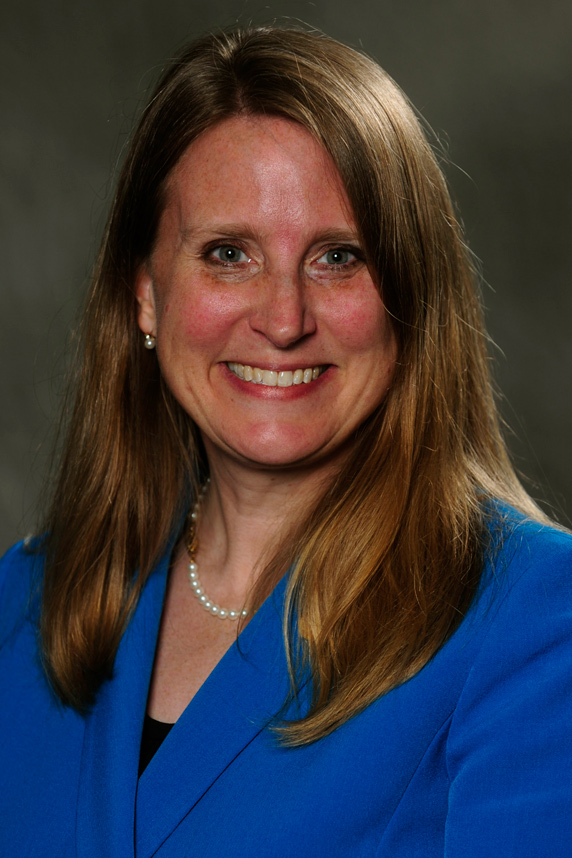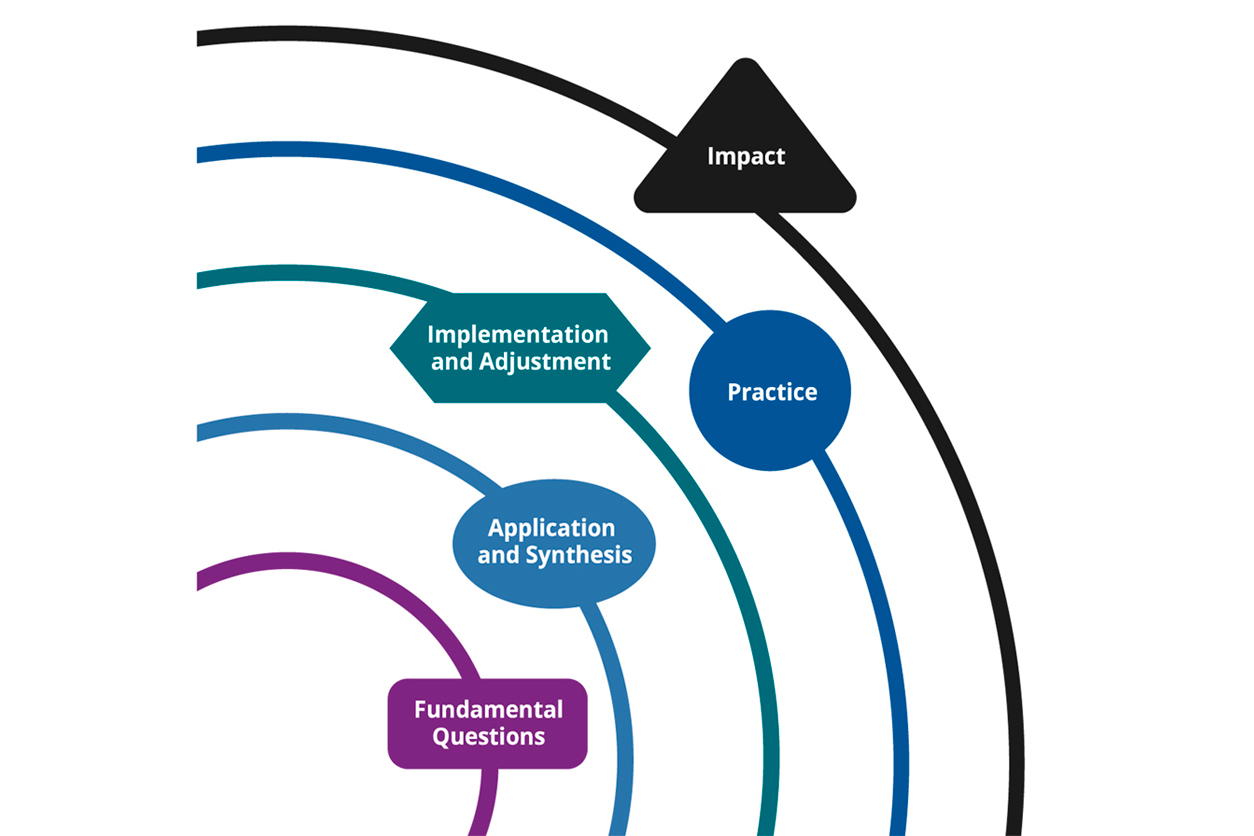 Pettibone said the framework helps science managers figure out what helps and hinders translational research, so they can implement strategies that make it more efficient. (Photo courtesy of Steve McCaw)
Pettibone said the framework helps science managers figure out what helps and hinders translational research, so they can implement strategies that make it more efficient. (Photo courtesy of Steve McCaw)A tool created by NIEHS to help grantees track their environmental health research is proving useful to other organizations that want to evaluate the impact of their own research programs. The tool, called the Translational Research Framework, provides researchers with visual guideposts as they move projects along the path from basic research experiments to public health interventions.
In recent months, the American Evaluation Association, the Alliance of Nurses for Healthy Environments, and the Social Research and Demonstration Corporation have all expressed interest in the framework.
“It is exciting to see our framework generate interest beyond NIEHS,” said Kristi Pettibone, Ph.D., a health scientist administrator with the NIEHS Policy Analysis Branch and the tool’s chief architect. “Many researchers are arriving at the same conclusion that these kind of case studies and storytelling frameworks are the best way to capture translational stories.”
Measuring environmental impacts
Jessica Castner, Ph.D., now editor in chief of the Journal of Emergency Nursing, was excited when she first came across the framework several months ago. At the time, she was co-chair of the Alliance of Nurses for Healthy Environments research workgroup. Castner invited Pettibone to present a webinar to her group, which helps nurses solve environmental challenges by creating new knowledge and sharing their research.
“The framework was elegant, and it resonated deeply with what we were trying to do as an organization,” said Castner. “It fills a critical gap in cohesively visualizing work that spans more traditional epidemiology with clinical applications of environmental health science. Some frameworks may force you to make false choices of doing one or the other, when many of us span both disciplines.”
 Castner has used the framework not only to map out the translation of individual research projects, but also to visualize her own career trajectory. (Photo courtesy of American Thoracic Society)
Castner has used the framework not only to map out the translation of individual research projects, but also to visualize her own career trajectory. (Photo courtesy of American Thoracic Society)For example, Castner has used the framework to integrate population-level data on emergency room visits and outdoor air pollution with individual-level insights regarding susceptibility to asthma and other diseases. She and her team recently submitted a paper to the journal Nursing Outlook, describing how they used the framework.
“The framework is especially helpful for articulating the importance of investing in basic research,” said Christie Drew, Ph.D., head of the NIEHS Program Analysis Branch. “Most public health advances would not be possible without past investments in the underlying mechanisms of biology, exposure, social systems, and more. We’re delighted that researchers are finding it useful to document interconnections between basic, clinical, and public health research — and then using it to figure out where they might go next.”
A translatable tool
 The framework captures broad categories of scientific effort, such as fundamental questions, application, practice, and health impact, and provides examples of each. (Photo courtesy of NIEHS)
The framework captures broad categories of scientific effort, such as fundamental questions, application, practice, and health impact, and provides examples of each. (Photo courtesy of NIEHS)One of the NIEHS Strategic Plan goals is to support using environmental health research to develop concrete strategies that protect and improve human health. This process of moving an idea along a trajectory toward a public health impact is known as translational research.
Pettibone and her colleagues first described the tool in a 2018 paper in the journal Environmental Health Perspectives. In an October guest blog post for the American Evaluation Association (AEA), Pettibone provided tips and resources to help other groups implement the framework.
“At the Georgia Clinical & Translational Science Alliance [Georgia CTSA] and across the dozens of other CTSA hubs, evaluators are tasked with showing the story behind advances in research,” said Eric Nehl, Ph.D., communications director for the AEA Translational Research Evaluation Topical Interest Group. “The Translational Research Framework has generated interest from our group because of its usefulness in informing the processes that connect the earliest phases of research to impact in the community. We find that researchers benefit from seeing the big picture of how their contributions accelerate this impact.”
Another reader of the AEA post was Leah Bartlett, a research associate at the nonprofit evaluation charity Social Research and Demonstration Corporation. She asked for copies of the framework materials. “To guide our work, we are always looking for well-designed frameworks,” said Bartlett. “I thought the visuals were excellent.”
Next up: Pettibone will speak about the tool at the April 2020 Toxicology and Risk Assessment Conference.
Citation: Pettibone KG, Balshaw DM, Dilworth C, Drew CH, Hall JE, Heacock M, Latoni AR, McAllister KA, O'Fallon LR, Thompson C, Walker NJ, Wolfe MS, Wright DS, Collman GW. 2018. Expanding the concept of translational research: making a place for environmental health sciences. Environ Health Perspect 126(7):074501.
(Marla Broadfoot, Ph.D., is a contract writer for the NIEHS Office of Communications and Public Liaison.)









